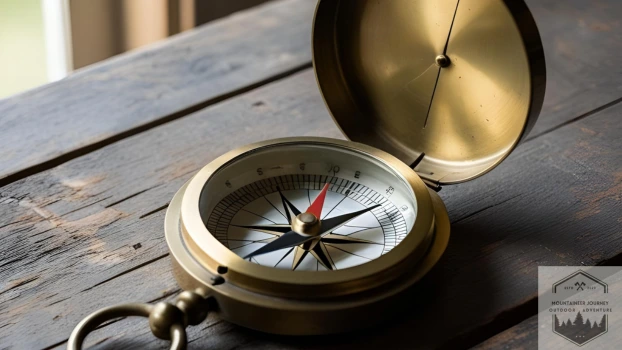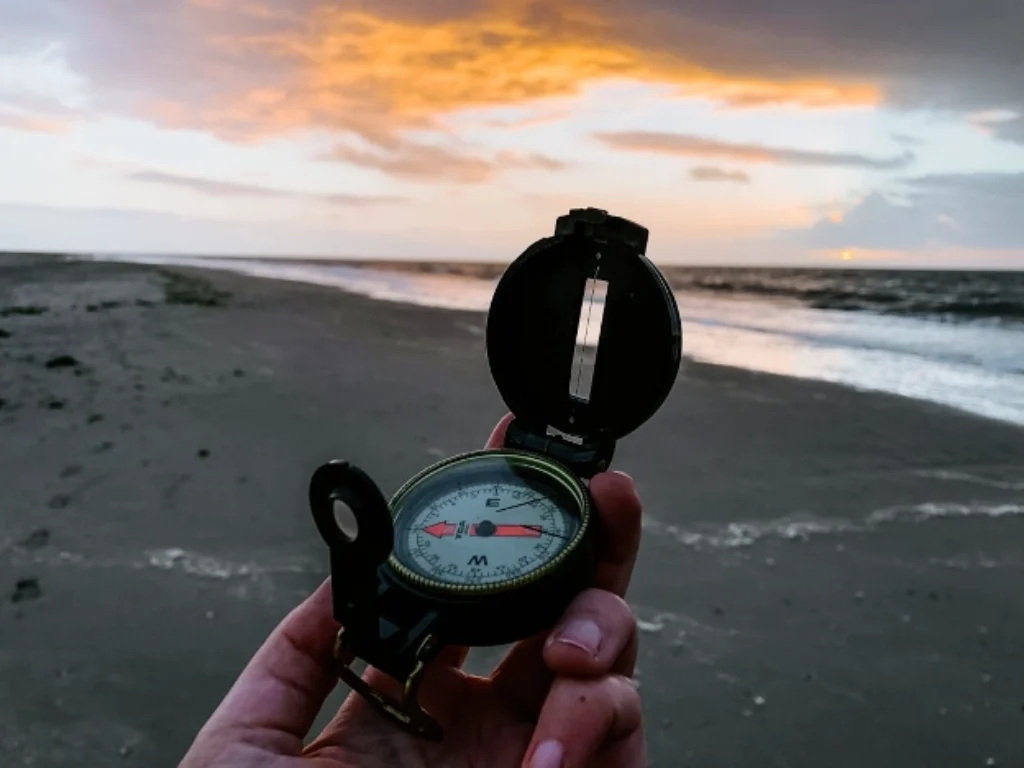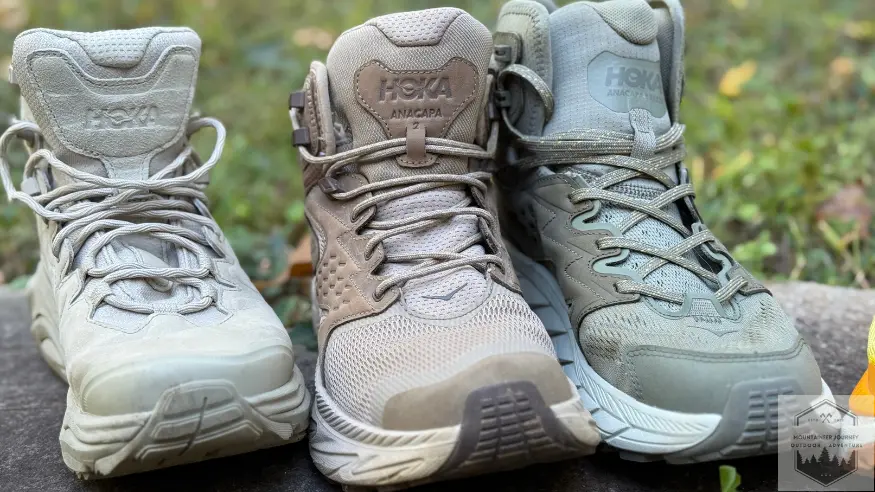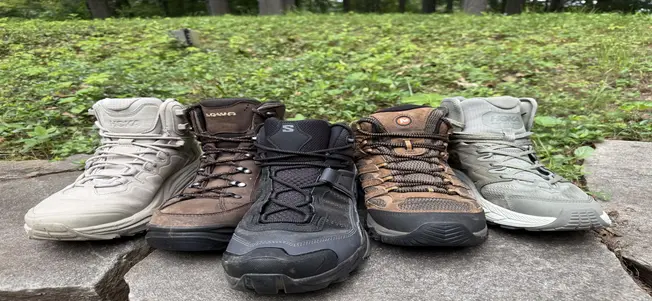How Does a Compass Work? Unlocking the Mysteries of Magnetic Navigation

A compass, one of the most trusted tools for navigation, has been guiding us for centuries. In this post we’ll explain how a compass works, the science behind magnetic navigation and give you practical tips on how to use a compass.
Compasses work on a simple yet powerful scientific principle: they point to the Earth’s magnetic field so you can determine your direction to magnetic North. Understanding how this tool works and its limitations is key if you use a compass for wilderness navigation or just for casual hikes.
Let’s begin with the basics of a compass, its parts and the science behind it.

How to Use a Compass: The Guide
What is a Compass?
A compass is a navigation tool that shows direction to the geographic cardinal directions (North, South, East, West). At its heart is a magnetized needle that spins on a pivot and aligns itself with the Earth’s magnetic field, pointing to the compass dial which is divided into 360 degrees for precise navigation.
Components of a Compass: Magnetic Needle
A compass works because it detects the Earth’s magnetic field. But how does a compass work in scientific terms? It works by using the natural phenomenon of magnetism. Here’s a deeper look:
- Earth as a Giant Magnet: The Earth is a giant magnet with its magnetic poles near the geographic poles. The planet generates its magnetic field because of the movement of molten iron alloys in its outer core.Magnetic North
- Aligns with Magnetic Field: The magnetic needle is a small magnet balanced on a pivot where it can spin freely. The Earth’s magnetic force pulls one end of the needle (usually marked as North) towards the Earth’s magnetic North pole.
- Magnetic Declination: Another important one to understand is magnetic declination, the angle between magnetic north and true north. This varies depending on where you are on the globe and must be taken into account for precise navigation.
Magnetic Declination Examples
| Location | Declination |
|---|---|
| New York, USA | 13° W |
| London, UK | 0° |
Now that you understand the components and the science behind it, you can use a compass effectively for navigation. Each part of the compass is crucial for the needle to spin freely and accurately.
Magnetic Fields and Their Effect on Compasses
What is Magnetic Declination?
Magnetic declination is the angle between true north (geographic north) and magnetic north, where a compass needle points. This angle varies greatly depending on your location and changes over time as the Earth’s magnetic poles move.
Understanding and accounting for declination is key for precise navigation, especially in high stakes situations like hiking in unknown terrain or sailing.
Magnetic Interference and Compass Accuracy
Even the best compasses can experience interference that affects their accuracy. Here’s what can cause it and how to fix it:
Sources of Interference
- Electronic devices: Mobile phones, GPS devices and radios can affect the magnetic sensor in a compass.
- Metal structures: Steel frames, cars and other large metal constructions can distort the magnetic field around a compass.
Tips to get Accurate Readings
- Keep the compass away from electronic gadgets and metal: When using a compass, keep it away from metal objects and electronic devices to avoid interference.
- Calibrate your compass regularly: Some compasses can be calibrated to improve accuracy, do it if you travel to areas with high magnetic variation often.

How to Use a Compass for Navigation
Using a compass is simple, you just need to align it with a map and the terrain. Here’s a step by step guide to basic navigation with a compass:
Align the Compass with the Map: Place the compass on the map so the edge of the baseplate is lined up with your current position and the destination you want to get to.
Set the Map to North: Rotate the map and compass together until the compass needle aligns with the magnetic north marking on the map. This will orient the map to true north. Make sure you align with your orienting arrow.
Take a Compass Bearing: To ensure accurate navigation, use the compass to take a compass bearing. Rotate the compass housing until the orienting lines align with the north-south grid lines on the map. Read the bearing at the index line. Adjust for magnetic declination if necessary to get the correct magnetic bearing.
Where to Go: Read the direction of travel arrow on the compass, it now points to your destination relative to your current position.
Steps to Read a Map with a Compass
- Step 1: Lay the map flat and place the compass on the map.
- Step 2: Align the baseplate with a known route or landmark.
- Step 3: Rotate the map and compass together until the north end of the compass needle points north.
- Step 4: The direction of travel arrow points to your destination.
Advanced Compass Techniques
For those who want to take their navigation to the next level here are some advanced techniques to learn:
- Triangulation to pinpoint your position:
- Identify two or three landmarks visible on the map and in your surroundings.
- Aim the compass at the first landmark and rotate the bezel until the needle aligns with the orienting arrow. Note the bearing.
- Draw a line on the map along the bearing from the landmark to your estimated position.
- Repeat for other landmarks: Where these lines intersect is your position on the map.
How to navigate in bad visbility
- Use the compass to follow a straight line by selecting landmarks along your bearing and moving from point to point, even in fog or heavy rain.
These advanced techniques will make you a better navigator in any environment, a compass is a must have for any adventurer.
How to maintain and use a compass
Compass Care
Looking after your compass will extend its life and have it working when you need it most. Here are the essentials:
- Storage: Store your compass in a dry, cool place away from electronic devices and strong magnetic fields to prevent the needle from demagnetizing.
- Cleaning: Use a soft, damp cloth to clean the compass. Avoid harsh cleaners or chemicals that can damage the housing or fog the clear base.
- Check: Regularly check for cracks, bubbles in the liquid (if liquid filled) and free movement of the needle. Any of these will compromise the compass.
Choosing the Right Compass
Choosing the right compass for you is important, especially with all the types out there. Here’s what to look for:
- Type of Compass:
- Basic orienteering compasses are enough for most hikers and outdoor enthusiasts.
- Advanced models with clinometers for climbers and geologists who need to measure slopes.
- Global needle compasses are for use in both the northern and southern hemispheres, perfect for world travelers.
- Features to consider:
- Adjustable declination: A feature to set the magnetic declination manually, saves time and reduces errors in the field.
- Sighting mirror: Useful for more accurate bearings when navigating to distant landmarks.
- Luminous markings: For low light or night navigation.
Recommended Compass Types for Various Activities
| Activity | Recommended Compass | Features |
|---|---|---|
| Hiking | Basic Orienteering Compass | Durable, easy to use, clear baseplate |
| Mountaineering | Advanced Compass with Clinometer | Clinometer, robust construction |
| Global Trekking | Global Needle Compass | Works worldwide, adjustable declination |
Compass FAQs
In this section we answer some of the most common questions about compasses to clear up the confusion and provide valuable tips:
How accurate are compasses?
Compasses are generally accurate if used correctly, as they point north towards the Earth’s magnetic north pole rather than true north. But accuracy can be affected by magnetic declination, nearby metal objects or electronic interference.
Can a compass work everywhere on Earth?
Compasses can be less effective near the magnetic poles due to extreme declination and horizontal needle movement. Global compasses are designed to work in these areas.
Who invented the Compass?
The compass was not invented by one person but developed over time across different cultures. The earliest form of the compass was likely invented in China during the Han Dynasty (206 BC to 220 AD) for divination and geomancy. These early compasses were made of lodestone, a naturally magnetized mineral, and not used for navigation until much later.
The first recorded use of the compass for navigation was during the Song Dynasty (960-1279 AD) in China. The Chinese developed a more advanced compass design, a lodestone spoon-shaped pointer that floated over a bronze plate, which was later improved to a needle floating in water.
The technology was then spread to Europe and the Islamic world through trade routes and was refined for maritime navigation by the 12th century. The dry compass, with a magnetized needle on a pivot, was a major innovation in medieval Europe.
The compass has been refined and developed over the centuries so it’s a collective achievement of multiple civilizations not one person.
What is a Magnetic Compass?
A magnetic compass is a navigation tool that uses a magnetized needle to align with Earth’s magnetic field, pointing to the magnetic north pole. Here’s a quick summary:
- Needle: A magnetized pointer that spins freely to show direction.
- Dial or Face: Shows cardinal directions (North, South, East, West).
- Housing: Holds the needle and dial, often filled with liquid to keep the needle stable.
Function Of A Magnetic Compass
The magnetic north compass needle aligns with Earth’s magnetic field lines so you can determine your orientation to the cardinal directions.
Uses Of A Magnetic Compass
Magnetic compasses are used for navigation in hiking, orienteering and mariners at sea. Also used in surveying and scientific fieldwork to have a reliable sense of direction.
Knowing how a compass works is not just about using the tool but understanding the intricate balance of Earth’s magnetic forces it reveals.
By taking care of your compass and using it correctly you can navigate the world more confidently. Whether you’re hiking your local trails or exploring remote wilderness, a compass is your trusted companion in your adventures.
How to use a compass for beginners?
First, to start using a compass for a beginner, keep an arrow behind you to point to where you are going. Turn the dial to make N (North) align to the compass needle. This figure on its dial shows you the direction you need to take your journey.
Why Should You Trust Us?
As an avid hiker and seasoned world traveler I have walked some of the most challenging terrain on the planet, relying heavily on traditional navigation tools like the compass to get me there. With over 20 years of outdoor experience, from the deserts of Africa to the Amazon rainforest, my adventures have taught me how to navigate with a compass in all conditions.
I have faced and overcome many navigation challenges on my journeys which has given me a deep understanding of magnetic orientation and its practical applications. My guidance is not just based on my personal experience but also on studying geomagnetic principles through experts in geography and orienteering.
Here I share my knowledge and passion for compass navigation to empower you to navigate the world more safely and efficiently. Whether you’re a beginner going on your first hike or an experienced adventurer looking to hone your navigation skills, the information in this guide comes from a place of experience and love for the outdoors. Trust me to guide you through learning how to navigate with a compass as it has guided me through many adventures around the world.
Want More Articles?
Adventure Awaits,
Tyler






